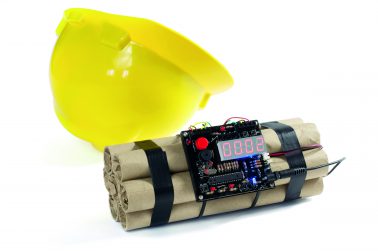The clock is ticking on your safety helmet
 Safety helmets or hard hats are vital pieces of PPE, providing essential protection to the head. However, they are not a once off purchase. Replacing them is necessary to keep providing the protection your employees require.
Safety helmets or hard hats are vital pieces of PPE, providing essential protection to the head. However, they are not a once off purchase. Replacing them is necessary to keep providing the protection your employees require.
Legal duties of the employer
The law around hard hats is covered by the Personal Protective Equipment (PPE) Regulations 1992 which requires the provision of protective equipment to protect employees from health and safety risks at work. To ensure the safety helmet meets the required legal standard, choose one which meets the BN EN 397 standards. Those which do not may be fakes, which will not adequately protect the user.
Head injury statistics
Even on the best-run worksite, accidents can happen and wearing a hard hat can significantly reduce the severity of injuries, therefore reducing the number of deaths from head injuries. Statistics from headway.org highlight how common head injuries are.
- In 2016-17, there were 155,919 hospitals admissions for head injury in the UK
- That equates to 427 every day, or one every three minutes.
Why replace a safety helmet?
A hard hat appears to be a durable piece of equipment and you might expect to rarely need to replace it, but this is not true. It is recognised best practice that hard hats are replaced every three years from date of issue, or five years from date of manufacture, at the very least. Obviously, it should be replaced sooner if it is damaged in an accident or exposed to chemicals such as solvents, but what if it appears to look fine after three years? Do not assume it is in good condition as the materials of the hard hat deteriorate over time and it may not be as robust as it appears.
Dating of a safety helmet
The date that the safety helmet was manufactured is stamped inside the shell near the peak. The design may differ, but the year should be clearly stated. Additionally, there will be something to indicate the month. This could be a number, for example 5 for May, or it may simply indicate the quarter of the year.
Spot checks
Without accident or exposure to chemicals a helmet should last for at least three years, but regular checks must be carried out to spot any damage which renders it ineffective. Employees should be encouraged to check their safety helmet before putting it on, and again when they take it off, reporting any damage no matter how small.
Maintenance of safety helmets
Hard hats should be cleaned with warm water and soap and allowed to air dry. Corrosive cleaning agents should not be used as they could weaken the material.
Store the hard hat in a place where it will not be hit or dented. It is also important to keep it away from direct sunlight and extreme temperatures.
